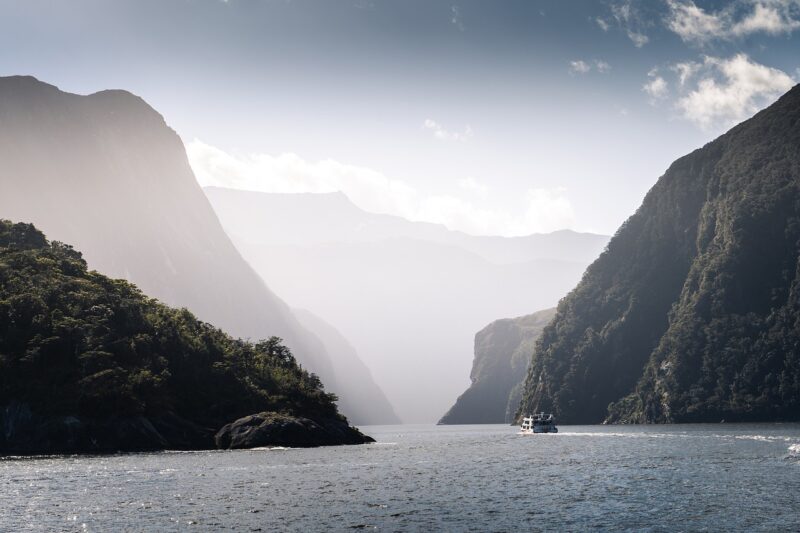
Sea caves, a natural phenomenon created by the relentless force of water against rock, are one of nature’s hidden gems. Occurring in coastlines around the world, these caves come in various shapes, sizes, and formations, showcasing the beauty and power of the ocean.
In this article, we’ll take an exciting journey through some of the world’s most stunning sea caves, uncovering their fascinating geological formations and the unique ecosystems they harbor. We’ll also delve into the processes that lead to the creation of these remarkable structures.
1. What Are Sea Caves?
Sea caves are typically found in rocky coastal areas and are formed through the erosive action of waves and wind, as well as chemical processes. They can be described as natural openings in cliffs, which often lead into the land, and are characterized by their stunning arches and enigmatic interiors. Some are easily accessible from the shore, while others require a kayak or boat to reach.
Some common characteristics of sea caves include:
- Geological Diversity: Sea caves are often carved out of a variety of rock types including limestone, sandstone, and volcanic rock, giving each cave its unique appearance and structure.
- Ecosystems: Many sea caves serve as habitats for unique marine life, including algae, mollusks, and various crustaceans, contributing significantly to coastal biodiversity.
- Aesthetic Features: From turquoise waters to intricate rock formations, sea caves often display breathtaking natural beauty, making them popular spots for tourists and photographers alike.
2. The Formation of Sea Caves
The formation of sea caves is primarily due to three processes: erosion, hydraulic action, and chemical weathering.
1. Erosion: The primary force in sea cave formation. Waves crash against the shoreline, and over time, the constant battering erodes weaknesses in the rock, gradually hollowing out caves. This process is influenced by factors such as wave intensity, rock type, and the structures present on the shore.
2. Hydraulic Action: As waves crash into cliffs, they compress air in crevices. When waves recede, this compressed air is released, causing rock fragments to break away. This mechanism accelerates erosion in hard rock areas, leading to the hollowing out of sea caves.
3. Chemical Weathering: The saltwater can chemically alter rocks. For instance, in limestone regions, acidic water can dissolve the rock, contributing to cave formation. This process can also lead to the creation of stunning stalactites and stalagmites within the caves.
Understanding these mechanisms helps us appreciate the delicate balance of nature and the beauty of the formations we see today.
3. Notable Sea Caves Around the World
Let’s explore some of the world’s most stunning sea caves, each a unique masterpiece of nature:
3.1. The Blue Grotto, Italy
Located on the island of Capri, the Blue Grotto is famous for its glowing blue waters caused by sunlight reflecting off the cave’s sandy bottom, creating an ethereal atmosphere. The cave’s entrance is quite small, which requires visitors to enter by boat, making it a magical experience.
3.2. Cathedral Cove, New Zealand
Cathedral Cove features an iconic natural archway leading to a beautiful beach. The cave is carved into soft volcanic rock and showcases stunning marine life, making it a hotspot for snorkeling and kayaking. It is also a popular filming location, notably featured in the Chronicles of Narnia film series.
3.3. Fingal’s Cave, Scotland
On the uninhabited island of Staffa, Fingal’s Cave is known for its impressive basalt columns, which resemble organ pipes. This unique structure creates incredible acoustics, attracting visitors who venture inside to hear the natural echoes of the sea. The cave is a popular spot for boat tours and wildlife watching.
3.4. The Painted Cave, California, USA
Located on Santa Cruz Island, the Painted Cave is famous for its vibrant colors created by mineral deposits. The cave’s stunning patterns and turbulent ocean waters draw kayakers and explorers from around the world, eager to witness its beauty first-hand.
3.5. Marieta Islands, Mexico
The Marieta Islands are known for their hidden beaches and striking rock formations. The caves here, particularly the Hidden Beach, offer a rare experience of swimming under a rock archway to find a secluded sandy shore. The area is also a protected national park, home to diverse wildlife and marine ecosystems.
Each of these sea caves tells its own story through its formation and the unique beauty it holds, making them worthwhile destinations for travelers.
4. The Unique Ecosystems within Sea Caves
Sea caves are not just beautiful; they also host diverse ecosystems that play crucial roles in marine biodiversity. The conditions within these caves create niche environments that support various marine life forms, from algae to fish and invertebrates. Some key aspects include:
1. Microclimates: The unique climate within caves, often cooler or more humid than outside, provides shelter and breeding grounds for various species.
2. Nutrient Enrichment: Waves frequently wash nutrients into sea caves, creating a rich feeding ground for sea life, including various species of fish, crustaceans, and more.
3. Habitat Diversity: The physical structures of the caves, including ledges and crevices, offer various habitats that cater to numerous marine organisms, allowing for unique interactions and dependencies among species.
Understanding the ecological significance of sea caves emphasizes the need for conservation efforts. Protecting these caves means safeguarding the rich biodiversity they sustain.
5. Conservation Efforts and Challenges
Preserving the beauty and ecological integrity of sea caves is essential. Here are some key conservation efforts and challenges:
– Marine Protected Areas (MPAs): Many governments have established MPAs that include sea caves, promoting sustainable practices and habitat protection.
– Education and Awareness: Increasing awareness about the ecological importance of sea caves often encourages communities and visitors to protect these natural wonders.
– Threats: Key threats to sea caves include climate change, pollution, and human activity. Rising sea levels and increased storm intensity can alter the natural landscape, while litter and toxins can impact marine life.
Efforts to protect these fragile environments are essential to ensure their beauty and biodiversity endure for future generations.
Conclusion
Exploring sea caves reveals not only their stunning beauty but also the complex processes that have shaped them and the rich ecosystems they support. Whether it’s the enchanting glow of the Blue Grotto or the majestic formations of Fingal’s Cave, each site tells a different story.
By understanding the importance of these natural structures and engaging in conservation efforts, we can help ensure that future generations also have the opportunity to admire and learn from these incredible wonders of nature. This beautiful interplay of water, rock, and life serves as a reminder of the power of natural forces and the delicate balance that sustains our planet.







